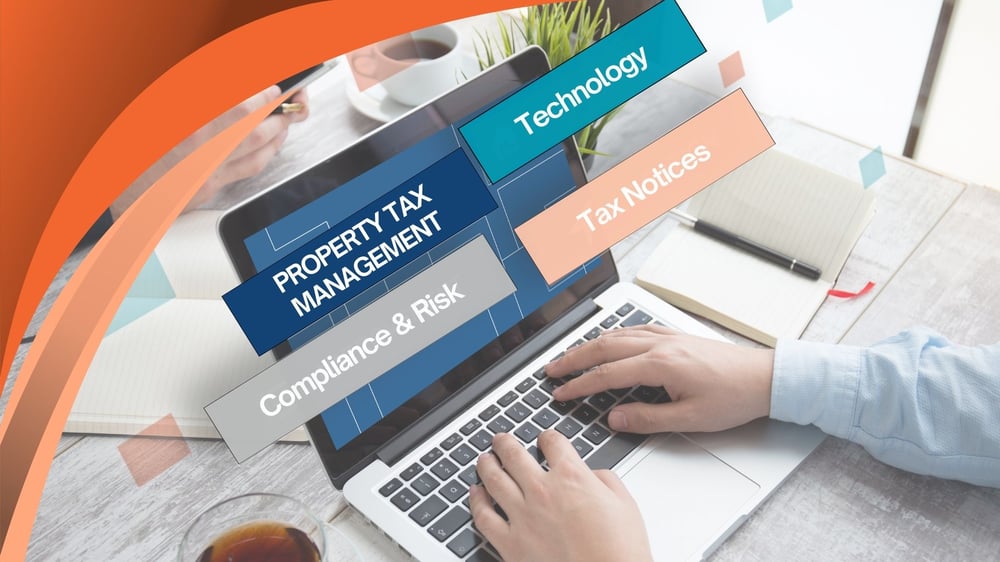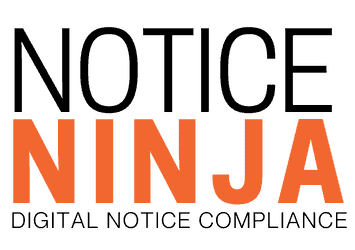Yes, NOTICENINJA is corporate tax notice compliance software that automates key workflows including notice assignments. The platform employs a rule-based system that can manage multiple level rules and ensure notices are directed to the appropriate stakeholder. As a result, you’ll never have to worry about notices being misdirected or slipping between the cracks.

How OCR and Automation Are Transforming Property Tax Compliance

11 March
From Compliance Burden to Competitive Edge
Property taxes remain one of the largest operating costs for corporations, real estate firms, and CPA practices managing multi-jurisdiction tax compliance. With thousands of local tax authorities, constantly shifting assessments, and strict deadlines, the process is complex, error-prone, and resource-intensive.
A recent Tax Foundation report highlights just how varied effective property tax rates are across the U.S.—ranging from 2.23% in New Jersey to just 0.27% in Hawaii. These differences make it even more difficult for businesses operating in multiple states to ensure accurate payments, prevent overpayment, and avoid penalties.
Yet, despite these challenges, many corporations and CPA firms are still handling tax notices manually sifting through paper notices, keying in data, and relying on email chains to resolve issues. This outdated approach increases compliance risk, leads to costly delays, and slows down decision-making.
The good news? Technology has changed the game.
Today, Optical Character Recognition (OCR), AI-driven automation, and real-time tax tracking are redefining property tax management—turning compliance from a liability into a competitive advantage.
The Compliance Challenge: Why Traditional Tax Workflows Are Broken
Unlike corporate income taxes, which follow federal guidelines, property taxes are assessed locally—with different rules in every county and state. This fragmented system presents significant hurdles for businesses managing multiple properties:
- Inconsistent Due Dates – Every jurisdiction has its own deadlines and procedures.
- Frequent Reassessments – Property valuations change, requiring constant monitoring.
- Manual Processing Delays – High volumes of tax notices slow down teams, increasing the risk of missed payments.
- Appeal Deadlines – Without automated tracking, businesses often lose the opportunity to challenge over assessed valuations.
The cost of inefficiency is real—with late fees, overpayments, and compliance errors adding up to millions in unnecessary expenses each year.
OCR and Automation: The Key to Streamlined Property Tax Compliance
Modern technology is eliminating the bottlenecks of manual tax compliance, enabling businesses to process, track, and resolve property tax notices faster and more accurately than ever.
- Automating Tax Notice Processing with OCR
OCR technology instantly extracts key data from tax notices, removing the need for manual data entry. When a property tax bill or assessment arrives, automation can identify:
- Jurisdiction and Tax Authority
- Assessed Property Value
- Tax Due Dates and Payment Instructions
- Potential Exemptions or Appeals
Instead of sifting through PDFs, paper documents or email threads, tax professionals get structured, searchable data in seconds—eliminating errors and cutting processing time dramatically.
- Real-Time Compliance Tracking and Alerts
With OCR-powered automation, businesses no longer need to track compliance manually across multiple spreadsheets. Instead, tax teams can:
- Set up automatic reminders for tax deadlines—avoiding costly late fees.
- Monitor property tax changes across jurisdictions—ensuring accurate payments.
- Generate real-time reports on tax obligations—enabling better forecasting and decision-making.
By centralizing tax compliance data, businesses gain full visibility into their property tax exposure and risks.
- Reducing Risk and Speeding Up Appeals
Property tax assessments don’t always reflect fair market value. In many cases, businesses have grounds to challenge overassessments—but only if they act quickly.
OCR-driven platforms can:
- Compare current tax assessments with historical data to spot discrepancies.
- Flag properties with significant increases in valuation for potential appeal.
- Auto-generate appeal letters and submit supporting documents—saving hours of manual work.
For corporations and CPA firms managing hundreds of properties, this automation ensures they never overpay due to inaccurate assessments.
- Faster Decision-Making and Collaboration
One of the biggest pain points in property tax management is the slow response time between teams. Traditionally, tax professionals need to email back and forth, manually loop in advisors, and chase down approvals.
With cloud-based tax automation, tax advisors and decision-makers can:
- Access tax notices instantly from any device
- Collaborate in real time to resolve issues
- Automatically route notices to the right department
A recent client of Notice Ninja described how automation has eliminated communication delays:
"I've been noticing that a lot of our tax advisors are jumping in and actually using NOTICENINJA, addressing things quicker than they would have been able had I needed to loop them in individually on each notice. So, I think it's been really helpful."
By removing friction in tax workflows, businesses save time, improve accuracy, and reduce compliance risk.
The Future of Property Tax Compliance: AI-Powered Predictions
While OCR and automation are already transforming property tax management, the next evolution will be AI-driven predictive analytics.
- AI will analyze tax trends—helping businesses anticipate changes in property valuations before they happen.
- Predictive modeling will identify appeal opportunities—allowing tax teams to challenge assessments proactively.
- AI will optimize property tax strategies—helping corporations minimize liabilities across portfolios.
By combining real-time compliance tracking, automation, and AI-powered insights, businesses can go beyond basic compliance—and start using property tax intelligence as a strategic advantage.
Why Businesses Can’t Afford to Ignore Tax Compliance Automation
With tax laws changing, property valuations fluctuating, and tax authorities enforcing stricter deadlines, manual compliance processes are no longer viable.
Corporations and CPA firms that fail to modernize face:
- Higher compliance costs due to inefficiency.
- Increased risk of late penalties and fines.
- Lost appeal opportunities, leading to unnecessary overpayments.
On the other hand, those who embrace automation can:
- Cut processing time by 70 percent with OCR and auto-extraction.
- Reduce compliance penalties by ensuring timely tax filings.
- Gain real-time insights into tax obligations across jurisdictions.
How Notice Ninja Is Leading the Charge
At Notice Ninja, we provide a state-of-the-art tax notice automation platform designed to help corporations and CPA firms take control of property tax compliance.
- OCR-powered data extraction removes manual processing.
- Automated compliance tracking ensures tax deadlines are met.
- AI-driven insights help businesses optimize their tax strategies.
Turn tax compliance from a liability into a competitive advantage—faster processing, fewer penalties, and real-time insights. With NOTICENINJA, tax advisors can act on notices immediately, eliminating bottlenecks and reducing response times.
Want to see how automation can transform your tax compliance process? Let’s talk.
RELATED POST
- Optimizing Property Tax Compliance with Optical Character Recognition
- Federal & State Notice Compliance
